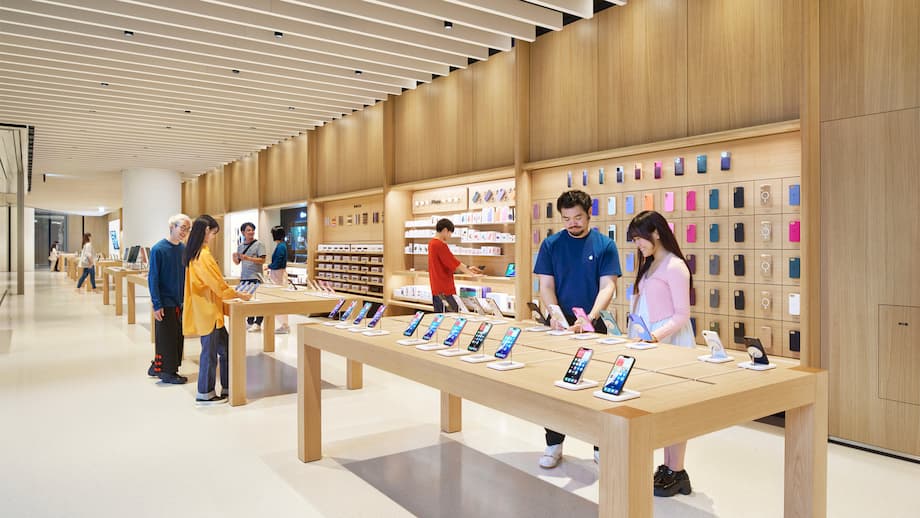A citywide push for healthier screen habits
A city in Aichi Prefecture, Toyoake City, has approved a draft ordinance that asks residents to limit recreational smartphone use to two hours per day. The measure, which excludes time spent on work or study, passed the city council by a vote of 12 in favor out of 19 members. It is set to take effect on October 1, with the city encouraging all citizens to follow the guideline across households and age groups. The text frames the recommendation as a public health effort, focusing on sleep quality, family routines, and the healthy development of children. Officials say smartphones are valuable tools, yet excessive use can disrupt home life and delay bedtime, which can ripple into classrooms and workplaces.
There is no enforcement mechanism or penalty. Compliance is voluntary. City leaders have presented the two hour cap as a community standard rather than a policeable rule. They also urge families to set evening cutoffs for children. The guidance says that children in elementary school or younger should stop using devices by 9 pm, and junior high students and older by 10 pm. Supporters argue that the ordinance can help curb device dependence and prompt households to reflect on habits. Critics counter that screen rules should be set within families and that some children rely on phones as a source of comfort, social connection, or safety.
The move lands in a country with high smartphone penetration and long standing concerns about sleep among students. Japan has experimented with local policy tools that rely on persuasion, shared norms, and cooperation rather than punishment. This ordinance follows that pattern. The city will not be tracking personal devices, and it does not define a method for verifying what counts as work or study time. Instead, it asks residents to make their own accounting of leisure time on phones and to recalibrate if the daily total keeps creeping upward.
What the ordinance says
The ordinance describes recreational smartphone use as time spent on activities such as social media, gaming, short video apps, browsing unrelated to work or homework, and similar leisure categories. Calls, messages, and apps used for employment, education, public services, or caregiving are outside the two hour frame. The text applies to all residents, not just minors, and the city highlights youth health as a core motivation.
City leaders emphasize that this is a guideline. There will be no fines, inspections, or reporting requirements. The goal is to start a conversation, set a shared benchmark, and give families, schools, and community groups a reference point. The ordinance pairs the two hour recommendation with nightly device cutoffs for children to promote consistent sleep routines during the school week.
Local conversations in schools and neighborhood groups are likely to be the main channels for discussing how to use the guideline. Residents can rely on built in tools on iOS Screen Time and Android Digital Wellbeing to see daily totals, set app timers, and schedule downtime at night.
Why target recreational time
Separating leisure from work and study time aims to avoid penalizing residents for essential communication and productivity. Recreational use concentrates activities that most often crowd out sleep and physical movement. Short video feeds and mobile games are designed to deliver rapid rewards, which can make it hard to put the phone down at night. Blue light exposure near bedtime can shift circadian rhythms, and constant notifications can fragment attention during homework.
Public health researchers have linked heavier screen use to later bedtimes, shorter sleep, and daytime sleepiness in school age children. Many studies find associations rather than direct causation, yet the pattern is consistent enough that professional groups advise families to set device free times, keep phones out of bedrooms overnight, and choose tech free activities before sleep. The city is translating that advice into a simple number families can remember.
Supporters and critics
Backers see the two hour marker as a nudge with minimal intrusion. A citywide recommendation can make it easier for parents to say no when late night scrolling stretches on. Teachers often report students arriving tired, especially after big content drops in social apps or games. Advocates hope the ordinance gives schools and parent groups a common language for setting boundaries without singling out any student.
Opponents argue that a one size limit ignores real differences among families. Some children use phones to manage anxiety, connect with peers when they feel isolated, or monitor safety when commuting alone. Others consume educational videos that are technically leisure but provide enrichment. Critics also warn against shaming teens who already feel pressure to maintain online friendships. They suggest that support, empathy, and digital literacy training may be more effective than hard caps.
Privacy is another concern. Because there is no enforcement, residents will not be subject to device checks. Even so, some worry that social pressure might push families to share screen time data to prove compliance. City officials have tried to steer clear of that scenario by describing the ordinance as a tool for personal reflection, not a scorecard.
How this compares with other rules in Japan and abroad
In 2020, Kagawa Prefecture introduced a nonbinding guideline that urged minors to limit gaming time on weekdays and to end device use by set times at night. The policy drew national attention and a legal challenge, and it functioned largely as a statement of values rather than a rule backed by penalties. The Toyoake approach follows the same voluntary model, but it applies to all residents and focuses on total leisure time on phones.
Other countries have taken tighter routes. China restricts online gaming for minors to short windows on weekends and holidays, with account systems tied to real names. South Korea once had a youth shutdown law that blocked late night gaming for younger teens, then repealed it in 2021 after a long debate about effectiveness and rights. Several European countries and the United Kingdom have issued guidance for schools to limit phone use during the day, and many districts in the United States now require students to store phones in lockers or sealed pouches.
The spectrum of approaches points to a tradeoff. Severe restrictions can deliver fast reductions in specific activities, yet they introduce burdens on families, platforms, and schools. Voluntary standards rely on social norms, communication, and practical tools. The Toyoake plan sits on the lighter end of that spectrum, with the city betting that clear expectations will make a difference without formal punishment.
Could a voluntary limit change behavior
Policies that depend on voluntary cooperation often work when the rule of thumb is easy to remember, the community talks about it often, and the personal benefits show up quickly. Two hours per day is a simple anchor, and modern smartphones already include dashboards that display daily totals. If families pair the guideline with small changes, such as silencing notifications at night or moving chargers out of bedrooms, sleep and focus can improve within days.
The absence of penalties avoids conflict at the cost of uneven adoption. Some residents will embrace the challenge and share progress with friends or classrooms. Others will ignore it, especially if entertainment fills a gap in their day. That is why many experts recommend combining time limits with positive replacements like outdoor play, in person clubs, reading, exercise, or creative work on paper. When the replacement activity is appealing, the limit is easier to keep.
Practical tips to manage two hours a day
Families and individuals who want to align with the new guideline can try simple steps that lower friction and build momentum.
- Turn on iOS Screen Time or Android Digital Wellbeing to track daily totals.
- Use app timers for social media and video apps, then honor the stop alert.
- Schedule Downtime or Bedtime so notifications pause after 9 pm or 10 pm.
- Move the most tempting apps off the home screen to reduce quick taps.
- Disable autoplay where possible to avoid endless queues of clips.
- Charge phones outside bedrooms to protect sleep.
- Try grayscale or focus modes in the evening to make the phone less appealing.
- Set device free zones at the dinner table and during the hour before sleep.
- Batch entertainment into planned windows, then switch to an offline activity.
- For students, create a school focus mode that hides entertainment until homework is done.
What the city may do next
City offices may promote the guideline through schools, community centers, and clinics. Progress could be measured through voluntary surveys, school feedback on sleep and tardiness, and participation in workshops. Parent groups could share anonymized summaries of screen time data to illustrate trends without naming individuals.
If residents ask for more help, the city could partner with pediatricians, sleep specialists, and counselors for seminars, publish short guides in multiple languages, and offer checklists for teachers. Libraries and youth centers can host late afternoon activities that give students a reason to put phones away before dinner. These steps do not require enforcement, yet they make the guideline visible and convenient.
Key Points
- Toyoake City in Aichi Prefecture approved a voluntary two hours per day cap on recreational smartphone use.
- The ordinance passed 12 to 7 in the city council and takes effect on October 1.
- Work, study, caregiving, and public service use are outside the two hour limit.
- No enforcement or penalties are included, the city frames the rule as a community guideline.
- Suggested cutoffs: 9 pm for elementary age or younger, 10 pm for junior high and older.
- Supporters cite sleep and child development, critics prefer family set rules and worry about stigma.
- The model mirrors other voluntary screen policies in Japan, as seen in Kagawa Prefecture.
- Global approaches vary, from strict gaming limits for minors in China to school based phone rules in Europe and the United States.
- Practical tools on phones can help residents track and manage leisure time.




